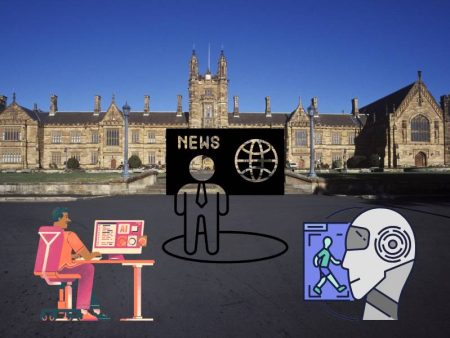You ever read something online and think, Did a person actually write this… or was it a robot with a thesaurus and too much coffee?
Yeah, me too.
We’re living in an age where the line between human and machine-generated content is blurrier than my vision without contacts. And that’s sparked a wild new question: Can AI content detectors really tell the difference between a human and a machine?
Let’s get into it—because this rabbit hole is deeper (and more frustrating) than you might think.
A Quick Confession Before We Get Technical
I once submitted an article I swear I wrote myself—late at night, with a cat sitting on my keyboard, Spotify playing sad indie music, the whole authentic vibe.
Guess what?
An AI detector flagged it as 99.8% machine-written.
Yeah, that stung. Like, excuse me? I poured my soul into that piece while sipping chamomile tea and questioning life. I was the tortured artist. And now some software thinks I’m just an algorithm in a hoodie?
Rude.
But that’s the thing. These detectors are everywhere now, and they’re being taken seriously—in classrooms, by editors, even by clients. And yet… they’re far from perfect.
What Are AI Content Detectors, Anyway?
Think of them like robot bouncers at the club. Their job is to check your ID—only in this case, the “ID” is whether your text smells like AI.
The AI Content Detector is designed to scan a piece of writing and determine whether it was likely written by a human or generated by a model like ChatGPT, Claude, or something else with too many parameters and no sense of humor.
They do this by looking at patterns. Repetition. Sentence structure. Predictability. Basically, if it looks too polished or too… statistically safe, they raise a flag.
But here’s the kicker: humans write in patterns, too.
Especially tired, overworked humans who use templates or fall back on “professional-sounding” phrases. So the whole thing? Kind of a guessing game.
The Accuracy Problem No One Talks About
Here’s a fun stat (and by fun, I mean mildly horrifying): Some AI detectors report false positives up to 40% of the time.
Let that sink in.
That means almost half the time, they might tell you a real person didn’t write something… even when they did. That’s like your microwave accusing you of cooking with it when you clearly used the stove.
Even scarier? These tools are being used to evaluate students. Employees. Writers. People whose reputations are tied to how “authentic” their words are.
So yeah, I’ve got strong feelings about this.
Why It’s So Hard to Tell the Difference
Let’s break it down:
- AI is getting scary good at mimicking us.
Like, “maybe this thing understands me better than my therapist” level good. The prose is flowing, the metaphors are decent, and heck—sometimes the jokes land. That’s impressive and terrifying all at once. - Humans are sometimes really bad writers.
(It’s okay, we’ve all been there.) If someone’s writing is stiff, repetitive, or uses cliché phrases, an AI detector might think it came from a bot—even if it was just their 2 a.m. term paper after a Red Bull binge. - Tone is tricky.
AI often gets accused of lacking nuance or emotional intelligence. But some detectors use those very emotional nuances—like sarcasm, storytelling, or rhetorical questions—as indicators of humanness. Problem is, bots are learning that, too.
So… Can You Trick the Detector?
Short answer: Yep.
But the ethics are fuzzy.
There are tools now designed to “humanize” AI-generated content—basically rewrite or reshape the text so it passes as human-made. One such tool, the AI Content Humanizer Tool, is made exactly for that.
Some people use it because they’re tired of being falsely accused. Others? Just want to get their AI-written content past the bouncer.
I’m not here to judge. But I am saying: if you have to “humanize” something, maybe we should rethink how we define “human” in the first place. Because clearly, these tools aren’t doing a great job at figuring it out.
Let’s Talk Empathy for a Second
Imagine this: a high school senior, English as their second language, finally nails a killer essay. They submit it proud—heart pounding.
Then the teacher runs it through a detector.
“It’s 80% AI-written,” the result says.
But it wasn’t.
It was just the best they’d ever written. Clean. Structured. Like they’d been practicing for months.
Now that student has to prove they didn’t cheat. And that sucks. Because it’s the opposite of what writing’s supposed to be: expressive, freeing, deeply personal.
Detectors don’t account for growth. Or emotion. Or tears on a keyboard.
Just patterns.
Okay But What About Images?
Ah, glad you asked.
Turns out text isn’t the only battleground. AI-generated images are now fooling people left and right—realistic faces, “photos” of events that never happened, art so good you’d swear it came from a human hand with a messy paintbrush.
So naturally, we now have tools like the AI Image Detector Without Sign Up, which can help identify whether a picture is AI-generated or not.
And yes, these tools are helpful—especially for journalists, designers, or anyone trying to figure out whether that “viral” image is real or just another fake made for clicks.
But again: the tech isn’t perfect. It’s improving. Fast. But we’re still in the Wild West of visual misinformation, and these detectors are more sheriffs than judges.
Where Does This Leave Us?
Here’s the messy truth:
AI content detectors are a helpful layer—not a final verdict. They’re like a smoke alarm. If it goes off, you should check the kitchen—but you don’t immediately burn down the house.
We need to start treating them like tools for context, not condemnation.
Writers shouldn’t be punished for being too articulate. Students shouldn’t fail because their essays “seem” too advanced. And companies shouldn’t reject applicants just because their cover letter tripped an algorithm.
Nuance matters. Intent matters. And humans? We’re beautifully messy creatures who sometimes write like bots… and bots that increasingly write like us.
Final Thoughts (From a Definitely-Real Person)
So, can AI content detectors really tell the difference between human and machine?
Sometimes. But not always.
And that “sometimes” can cause real damage if we rely on it too heavily.
My advice?
- Use detectors as a second opinion, not a judge.
- Trust your gut when reading—emotion and authenticity still shine through.
- Advocate for fairness where these tools are being used, especially in education and hiring.
- And remember, even if your content is 100% human, don’t be surprised if a detector thinks otherwise.
Because sometimes, even our most heartfelt words get mistaken for machine logic.
Maybe that says more about the algorithms than it does about us.
Or maybe—just maybe—we’ve all got a little bit of machine in us now.
What’s Your Experience?
Ever had your work flagged unfairly? Tried to humanize content and still got caught? Or maybe you’re a teacher trying to make sense of all this?
Drop your story in the comments. I read every one—yes, me, a human with too many browser tabs open and a coffee addiction.
Let’s talk.
Written by someone who occasionally types like a robot but cries like a poet.


